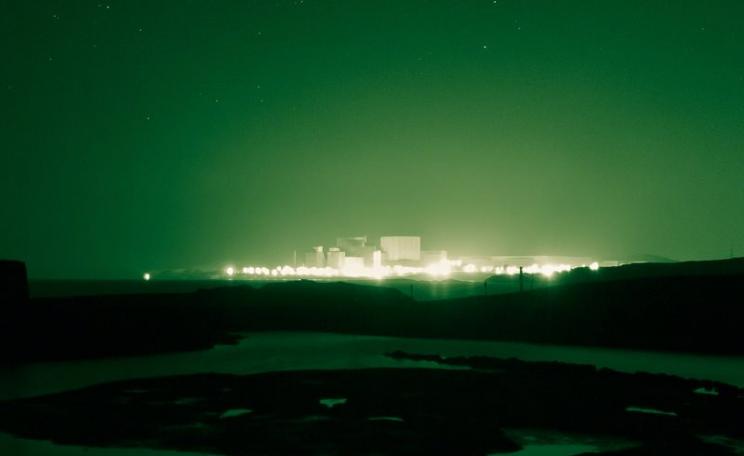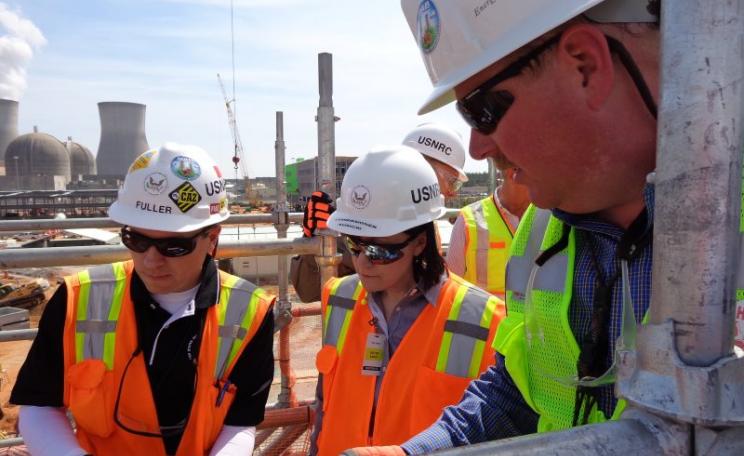Monju reached criticality in 1994 but was shut down in December 1995 after a sodium coolant leak and fire. The reactor didn't restart until May 2010, and it was shut down again three months later. Decommissioning Monju will cost an estimated $3 billion.
1956 US Navy Admiral Hyman Rickover summarized his experience of these reactors by saying they are 'expensive to build, complex to operate, susceptible to prolonged shutdown as a result of even minor malfunctions, and difficult and time-consuming to repair.' Sixty years later, this summary remains apt.
Fast neutron reactors are "poised to become mainstream" according to the World Nuclear Association.
The Association lists eight "current" fast reactors. But three of them - India's Prototype Fast Breeder Reactor, and the Joyo and Monju reactors in Japan - are not operating. That leaves just five fast reactors, three of them experimental.
Nuclear physicist Thomas Cochran summarises the unhappy history of fast reactors: "Fast reactor development programs failed in the: 1) United States; 2) France; 3) United Kingdom; 4) Germany; 5) Japan; 6) Italy; 7) Soviet Union / Russia 8) US Navy and 9) the Soviet Navy. The program in India is showing no signs of success and the program in China is only at a very early stage of development."
The latest setback was the decision of the Japanese government at an extraordinary Cabinet meeting on 21st September to abandon plans to restart the Monju fast breeder reactor. A formal announcement of the decision is likely to be made by the end of the year, government officials said.
After the Cabinet meeting, Chief Cabinet Secretary Yoshihide Suga said the government will set up an expert panel that will "carry out an overall revision of the Monju project, including its decommissioning" by the end of this year.
Monju won't be missed. Japan Times reported: "Monju not only absorbed fistfuls of taxpayer money, but also suffered repeated accidents and mismanagement while only going live for a few months during its three-decade existence."
Monju's troubled history
Monju reached criticality in 1994 but was shut down in December 1995 after a sodium coolant leak and fire. The reactor didn't restart until May 2010, and it was shut down again three months later after a fuel handling machine was accidentally dropped in the reactor during a refuelling outage.
Monju reached criticality in 1994 but was shut down in December 1995 after a sodium coolant leak and fire. The reactor didn't restart until May 2010, and it was shut down again three months later. Decommissioning Monju will cost an estimated $3 billion.
In November 2012, it was revealed that Japan Atomic Energy Agency had failed to conduct regular inspections of almost 10,000 out of a total 39,000 pieces of equipment at Monju, including safety-critical equipment.
In November 2015, the Nuclear Regulation Authority declared that the Japan Atomic Energy Agency was "not qualified as an entity to safely operate" Monju. Education minister Hirokazu Matsuno said on 21 September 2016 that attempts to find an alternative operator have been unsuccessful.
On 15th August 2016, less than a week before the extraordinary Cabinet meeting, the Nuclear Regulation Authority rejected a request to lift a ban on operating Monju, imposed in 2013 after the revelation that safety inspections of thousands of components had not been carried out.
The government has already spent 1.2 trillion yen (US$12bn) on Monju. The government calculated that it would cost another 600 billion yen (US$6bn) to restart Monju and keep it operating for another 10 years. Offline maintenance costs amount to around 20 billion yen a year (US$200m).
Decommissioning also has a hefty price-tag - far more than for conventional light-water reactors. According to a 2012 estimate by the Japan Atomic Energy Agency, decommissioning Monju will cost an estimated 300 billion yen (US$3bn).
Reprocessing in Japan
Logically, the decision to scrap Monju should be followed by a decision to scrap the partially-built Rokkasho reprocessing plant. Providing plutonium fuel to Monju - and, in time, other fast reactors - was one of the main justifications for Rokkasho.
Moreover, Japan already has an astronomical stockpile of 48 tonnes of separated plutonium from the reprocessing of Japanese spent fuel in European reprocessing plants. Rokkasho would result in an additional 8-9 tonnes of separated plutonium annually.
But the government seems determined to proceed with Rokkasho, which is due to start up in 2018. The reprocessing plant's scheduled completion in 1997 has been delayed by more than 20 times due to a series of technical glitches and other problems, and its construction cost is now estimated at 2.2 trillion yen (US$22bn) - three times the original cost estimate.
How to justify continuing with Rokkasho without a fast breeder program? The Japanese government says that it will continue research and development into fast breeder reactors. At the extraordinary Cabinet meeting on 21st September, the government decided to commission a road map for developing 'demonstration fast reactors' by the end of the year.
One option is to attempt to restart the Joyo experimental fast reactor in Ibaraki Prefecture (shut down since 2007 due to damage to some core components - the World Nuclear Association says its future is "uncertain"), or Japan may pursue joint research with France (specifically, France's plans to develop a demonstration fast reactor called ASTRID).
Operating a massive reprocessing plant in support of a small, experimental fast reactor program makes no sense, especially given the existing plutonium stockpile. Another rationale for Rokkasho - separating plutonium to be incorporated into MOX fuel for light-water reactors - is just as illogical. Only one operating reactor - Ikata 3 in Ehime Prefecture - uses MOX fuel.
Will sense prevail in Japan's 'nuclear village'? Probably not
Perhaps sense will prevail and Japan will abandon both fast reactors and reprocessing - but that isn't seen as a likely outcome. Masafumi Takubo and Frank von Hippel noted in a recent article:
"According to a 2011 estimate by Japan's Atomic Energy Commission, operating the RRP [Rokkasho Reprocessing Plant] will cost about ¥200 billion (~US$2 billion) per year to produce plutonium with a fuel value that is less than the cost of fabricating it into fuel. The economics of reprocessing in France are similarly irrational.
"One therefore needs to find other explanations than those stated for the persistence of reprocessing in France and Japan. Partial explanations include:
-
The thousands of jobs and government subsidies to local and regional governments associated with reprocessing and related facilities have become important to the rural areas where they are located;
-
Abandoning the pursuit of a plutonium economy would be seen by elite nuclear technocrats as an admission that they had wasted the equivalents of tens of billions of taxpayers' dollars;
-
Reprocessing is government policy and therefore not responsive to market economics; and
-
In Japan, some see its reprocessing capability as providing a virtual nuclear deterrent."
India's failed fast reactor program
India's fast reactor program has been a failure. The budget for the Fast Breeder Test Reactor (FBTR) was approved in 1971 but the reactor was delayed repeatedly, attaining first criticality in 1985. It took until 1997 for the FBTR to start supplying a small amount of electricity to the grid. The FBTR's operations have been marred by several accidents.
Preliminary design work for a larger Prototype Fast Breeder Reactor (PFBR) began in 1985, expenditures on the reactor began in 1987/88 and construction began in 2004 - but the reactor still hasn't started up. Construction has taken more than twice the expected period.
In July 2016, the Indian government announced yet another delay, and there is scepticism that the scheduled start-up in March 2017 will be realised. The PFBR's cost estimate has gone up by 62%.
India's Department of Atomic Energy (DAE) has for decades projected the construction of hundreds of fast reactors - for example a 2004 DAE document projected 262.5 gigawatts (GW) of fast reactor capacity by 2050.
But India has a track record of making absurd projections for both fast reactors and light-water reactors - and failing to meet those targets by orders of magnitude. s aAcademic M.V. Ramana writes:
"Breeder reactors have always underpinned the DAE's claims about generating large quantities of electricity. Today, more than six decades after the grand plans for growth were first announced, that promise is yet to be fulfilled. The latest announcement about the delay in the PFBR is yet another reminder that breeder reactors in India, like elsewhere, are best regarded as a failed technology and that it is time to give up on them."
Russia's snail-paced fast-breeder program
Russia's fast reactor program is the only one that could be described as anything other than an abject failure. But it hasn't been a roaring success either.
Three fast reactors are in operation in Russia - BOR-60 (start-up in 1969), BN-600 (1980) and BN-800 (2014). There have been 27 sodium leaks in the BN-600 reactor, five of them in systems with radioactive sodium, and 14 leaks were accompanied by burning of sodium.
The Russian government published a decree in August 2016 outlining plans to build 11 new reactors over the next 14 years. Of the 11 proposed new reactors, three are fast reactors: BREST-300 near Tomsk in Siberia, and two BN-1200 fast reactors near Ekaterinburg and Chelyabinsk, near the Ural mountains.
However, like India, the Russian government has a track record of projecting rapid and substantial nuclear power expansion - and failing miserably to meet the targets. As Vladimir Slivyak recently noted in Nuclear Monitor:
"While Russian plans looks big on paper, it's unlikely that this program will be implemented. It's very likely that the current economic crisis, the deepest in history since the USSR collapsed, will axe the most of new reactors."
While the August 2016 decree signals new interest in reviving the BN-1200 reactor project, it was indefinitely suspended in 2014, with Rosatom citing the need to improve fuel for the reactor and amid speculation about the cost-effectiveness of the project.
In 2014, Rosenergoatom spokesperson Andrey Timonov said the BN-800 reactor, which started up in 2014, "must answer questions about the economic viability of potential fast reactors because at the moment 'fast' technology essentially loses this indicator [when compared with] commercial VVER units."
Russian plans in the 1980s to construct five BN-800s in the Ural region failed to materialise and, as the International Panel on Fissile Materials noted last December, plans to scale up fast reactor deployment to 14 GW by 2030 and 34 GW by 2050 do not seem realistic.
OKBM - the Rosatom subsidiary that designed the BN-1200 reactor - previously anticipated that the first BN-1200 reactor would be commissioned in 2020, followed by eight more by 2030. The projection of nine BN-1200 reactors operating by 2030 was fanciful, and the latest plan for three new fast reactors by 2030 will not be realised either.
The BREST-300 fast reactor project is stretching Rosatom's funds. Bellona's Alexander Nikitin said in 2014 that Rosatom's 'Breakthrough' program to develop BREST-300 was only breaking Rosatom's piggy-bank.
China's program going nowhere fast
Australian nuclear lobbyist Geoff Russell cites the World Nuclear Association (WNA) in support of his claim that China expect fast reactors "to be dominating the market by about 2030 and they'll be mass produced."
Does the WNA paper support the claim? Not at all. China has a 20 MWe experimental fast reactor, which operated for a total of less than one month in the 63 months from criticality in July 2010 to October 2015. For every hour the reactor operated in 2015, it was offline for five hours, and there were three recorded reactor trips.
China also has plans to build a 600 MWe 'Demonstration Fast Reactor' and then a 1,000 MWe commercial-scale fast reactor. Whether the 600 MWe and 1,000 MWe reactors will be built remains uncertain - the projects have not been approved - and it would be another giant leap from a single commercial-scale fast reactor to a fleet of them.
According to the WNA, a decision to proceed with or cancel the 1,000 MWe fast reactor will not be made until 2020, and if it proceeds, construction could begin in 2028 and operation could begin in about 2034. So China might have one commercial-scale fast reactor by 2034 - but probably won't. Russell's claim that fast reactors will be "dominating the market by about 2030" is unbridled jiggery-pokery.
According to the WNA, China envisages 40 GW of fast reactor capacity by 2050. A far more likely scenario is that China will have 0 GW of fast reactor capacity by 2050. And even if the 40 GW target was reached, it would still only represent around one-sixth of total nuclear capacity in China in 2050.
So fast reactors still wouldn't be "dominating the market" - even if capacity grows by orders of magnitude from 0.02 GW (the experimental reactor that is usually offline) to 40 GW.
Travelling-waves and the non-existent 'integral fast reactor'
Perhaps the travelling-wave fast reactor popularised by Bill Gates will come to the rescue? Or perhaps not. According to the WNA, China General Nuclear Power and Xiamen University are reported to be cooperating on R&D, but the Ministry of Science and Technology, China National Nuclear Corporation, and the State Nuclear Power Technology Company are all skeptical of the travelling-wave reactor concept.
Perhaps the 'integral fast reactor' (IFR) championed by 'nuclear greens' like James Hansen, George Monbiot and Mark Lynas will come to the rescue? Or perhaps not. The UK and US governments have been considering building IFRs (specifically GE Hitachi's 'PRISM' design) for plutonium disposition - but it is almost certain that both countries will choose different methods to manage plutonium stockpiles.
In South Australia, nuclear lobbyists united behind a push for IFRs / PRISMs, and they would have expected to persuade a stridently pro-nuclear Royal Commission to endorse their ideas. But the Royal Commission completely rejected the proposal, noting in its May 2016 report that:
-
advanced fast reactors are unlikely to be feasible or viable in the foreseeable future;
-
the development of such a first-of-a-kind project would have high commercial and technical risk;
-
there is no licensed, commercially proven design and development to that point would require substantial capital investment; and
-
electricity generated from such reactors has not been demonstrated to be cost competitive with current light water reactor designs.
So which generation technolgy is really 'unreliable' and 'intermittent'?
Just 400 reactor-years of worldwide experience have been gained with fast reactors. There is 42 times more experience with conventional reactors (16,850 reactor-years). And most of the experience with fast reactors suggests they are more trouble than they are worth.
Apart from the countries mentioned above, there is very little interest in pursuing fast reactor technology. Germany, the UK and the US cancelled their prototype breeder reactor programs in the 1980s and 1990s.
France is considering building a fast reactor (ASTRID) despite the country's unhappy experience with the Phénix and Superphénix reactors. But a decision on whether to construct ASTRID will not be made until 2019/20.
The performance of the Superphénix reactor was as dismal as Monju. Superphénix was meant to be the world's first commercial fast reactor but in the 13 years of its miserable existence it rarely operated - its 'Energy Unavailability Factor' was 90.8% according to the IAEA. Note that the fast reactor lobbyists complain about the intermittency of wind and solar!
A 2010 article in the Bulletin of the Atomic Scientists neatly summarised the worldwide failure of fast reactor technology:
"After six decades and the expenditure of the equivalent of about $100 billion, the promise of breeder reactors remains largely unfulfilled ... The breeder reactor dream is not dead, but it has receded far into the future. In the 1970s, breeder advocates were predicting that the world would have thousands of breeder reactors operating this decade. Today, they are predicting commercialization by approximately 2050.
"In the meantime, the world has to deal with the hundreds of tons of separated weapons-usable plutonium that are the legacy of the breeder dream and more being separated each year by Britain, France, India, Japan, and Russia.
"In 1956, US Navy Admiral Hyman Rickover summarized his experience with a sodium cooled reactor that powered early US nuclear submarines by saying that such reactors are 'expensive to build, complex to operate, susceptible to prolonged shutdown as a result of even minor malfunctions, and difficult and time-consuming to repair.' More than 50 years later, this summary remains apt."
'A demonstrably failed technology'
Allison MacFarlane, former chair of the US Nuclear Regulatory Commission, recently made this sarcastic assessment of fast reactor technology:
"These turn out to be very expensive technologies to build. Many countries have tried over and over. What is truly impressive is that these many governments continue to fund a demonstrably failed technology."
While fast reactors face a bleak future, the rhetoric will persist. Australian academic Barry Brook wrote a puff-piece about fast reactors for the Murdoch press in 2009. On the same day he said on his website that "although it's not made abundantly clear in the article", he expects conventional reactors to play the major role for the next two to three decades but chose to emphasise fast reactors "to try to hook the fresh fish".
So that's the nuclear lobbyists' game plan - making overblown claims about fast reactors and other Generation IV reactor concepts, pretending that they are near-term prospects, and being less than "abundantly clear" about the truth.
Dr Jim Green is the national nuclear campaigner with Friends of the Earth Australia and editor of the Nuclear Monitor newsletter, where a version of this article was originally published.
Nuclear Monitor, published 20 times a year, has been publishing deeply researched, often critical articles on all aspects of the nuclear cycle since 1978. A must-read for all those who work on this issue!







